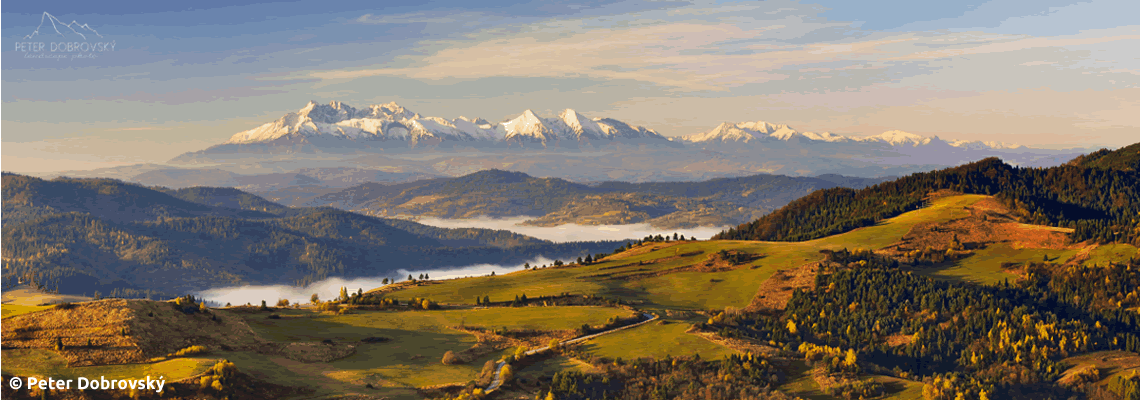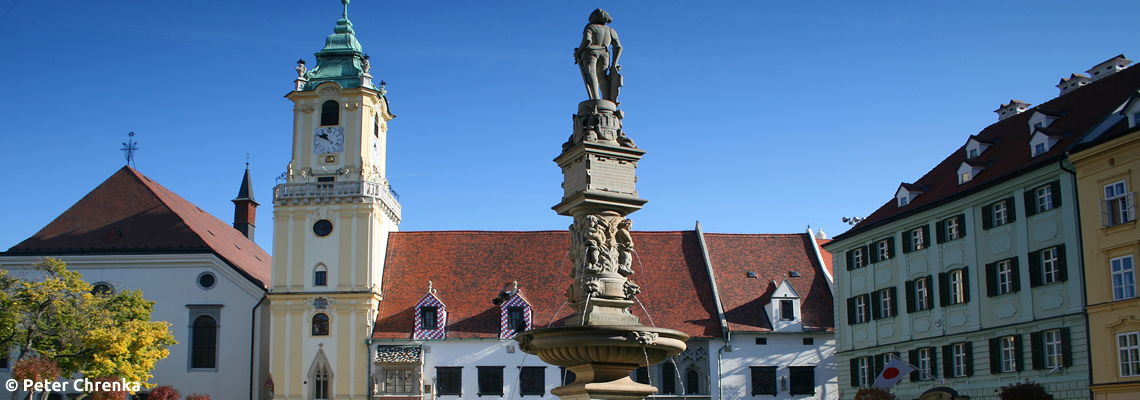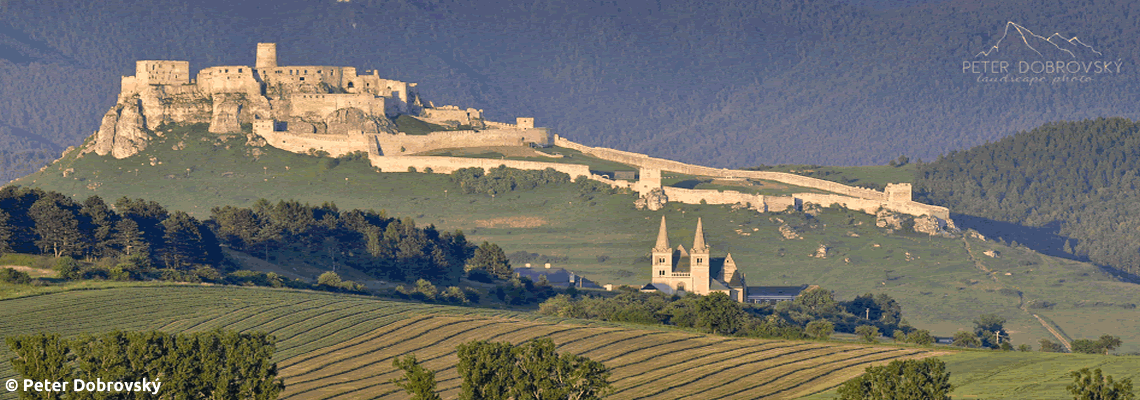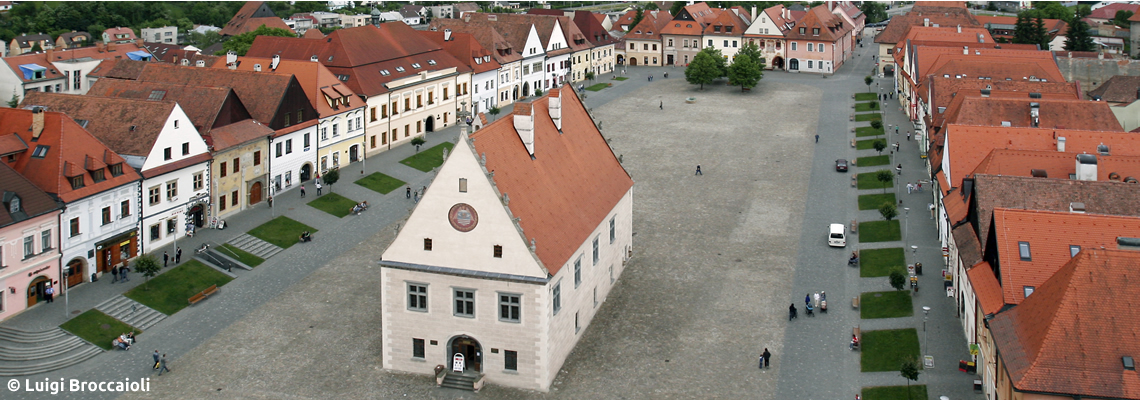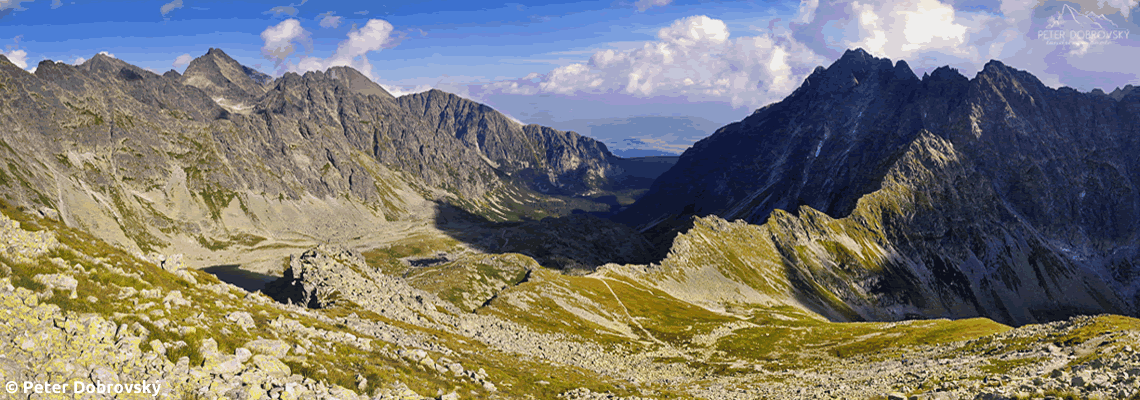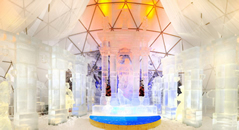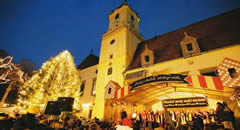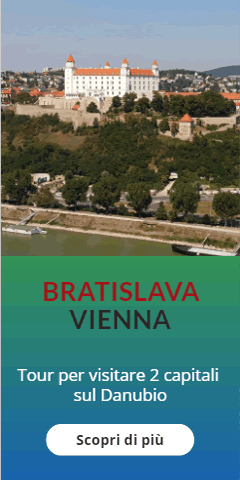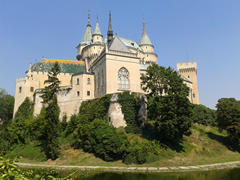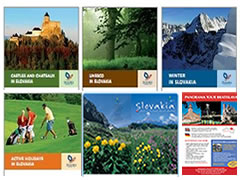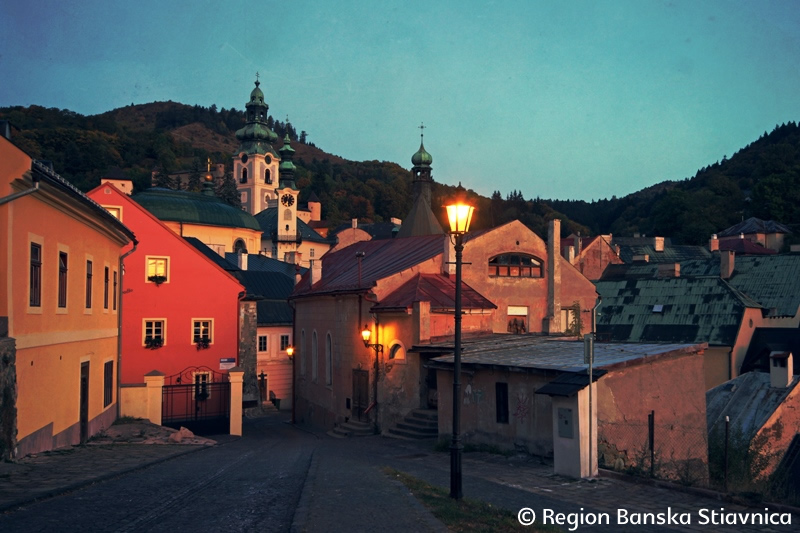 In the past the town was the main producer of silver of the Hungary and one of the most significant mining town in the Europe. The first news written on the extraction of the precious metals and silver dates from 1075. It privileges as cities of the mining industry go back already to 1238. The Stiavnica seal is of 1275 and it is also the oldest representation of town's fortifications which is a pre-heraldic topographic symbol, and with mining implements set into the Arms.
In the past the town was the main producer of silver of the Hungary and one of the most significant mining town in the Europe. The first news written on the extraction of the precious metals and silver dates from 1075. It privileges as cities of the mining industry go back already to 1238. The Stiavnica seal is of 1275 and it is also the oldest representation of town's fortifications which is a pre-heraldic topographic symbol, and with mining implements set into the Arms.
Banska Stiavnica, with its surroundings, had an extraordinary importance in the area of the public education of the mining industry. Already in 1735 in Banska Stiavnica was established the first mining school. In 1762 this school was promoted for decision of the Emperor Maria Theresa, to the Mining Academy, first example in the the world of technical Academy of this type, and was taken as an example from the polytechnic founded in Paris in the successive years. This academy remained opened until 1919, and until then it instructed hundred of specialists in mining field.
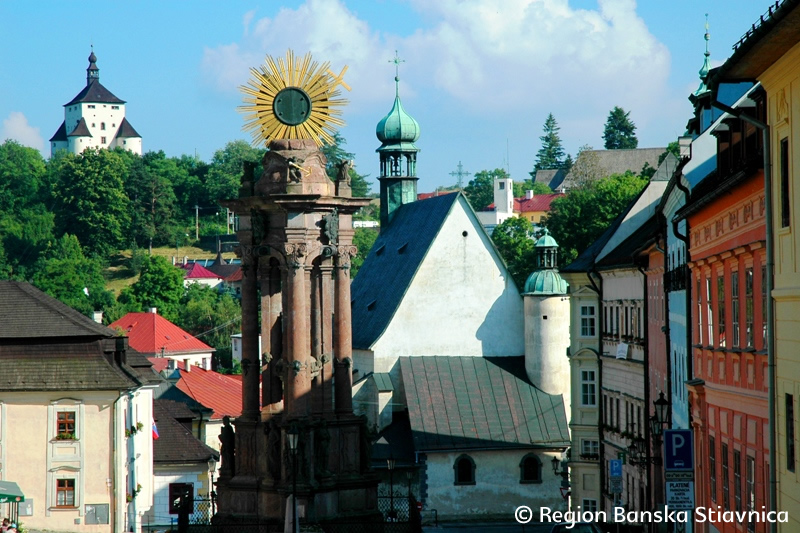
The historical nucleus of the town was declared in the 1950 the Urban conservation Areas. The characteristic symbols of the town are:
the Holy Trinity plague column, the Old Castle (a former fortress against the Turks), the New Castle in renaissance style.
Between the other places of interests we remember: the St. Catherine's church in Late-Gothic style - also called the Slovak church, built in years 1443-1491; the church of the Ascension of the Virgin Mary - the parish church, that in origin was a Romanesque basilica with three naves, built in the years around 1230; the Evangelical church of 1794-96, rich decorated and with a very precious organ to its inside.
The attraction of the Banska Stiavnica is the Open Air Mining Museum with an exposition of mining technique, the laboratory and a little wooden church for the miners. There is the possibility to enter in old mining rooms and to visit the historical Bartolomej gallery. The museum is closed from December to April.
Singularity of monuments in the symbiosis with the environment is an object of social protection for contemporary persons and future generations. Values concentrated on the area of town and its environment were registred into the List of the world cultural and natural heritage UNESCO on December 11, 1993.
www.banskastiavnica.travel
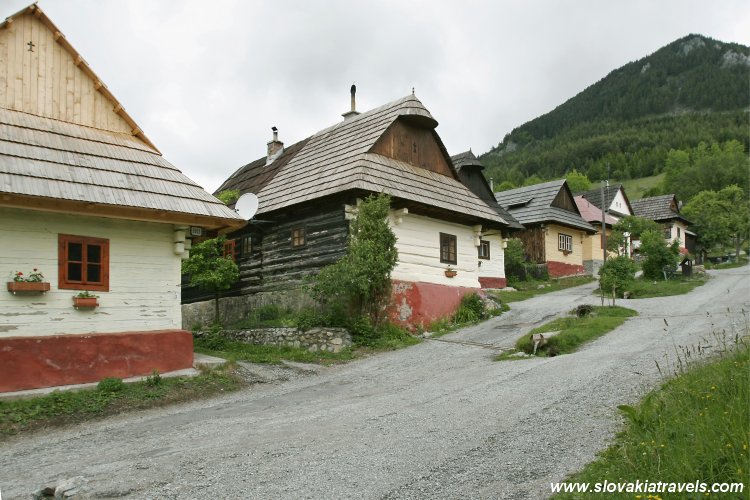 This picturesque village is situated near the town of Ruzomberok, 718 m above sea level. Vlkolinec is known for its wooden architecture well preserved, there are 40 wooden houses from 15th to 19th century, which from the outside look exactly alike.
This picturesque village is situated near the town of Ruzomberok, 718 m above sea level. Vlkolinec is known for its wooden architecture well preserved, there are 40 wooden houses from 15th to 19th century, which from the outside look exactly alike.
The first news written about village goes back to 1376. In the 18th century lived here the highest number of inhabitants (280), today live here about 20 persons. Vlkolinec was in 1944 marked by the war and a part of the village was burnt.
In the village it is situated the wooden Bell Tower of 1770 that dominates this peculiar village. Beyond the Bell Tower there is the Church of the Visit of the Virgin Mary of 1875, the Well - built with wooden logs of 1860 and the Museum that it is situated in the Farmer’s House with the historical exhibition about village and information office.
In 1977 Vlkolinec was declared like protected Reserve because of its country’s folk heritage The most important date for the village was the year 1993, when Vlkolinec has been included in the World's cultural heritage list of UNESCO.
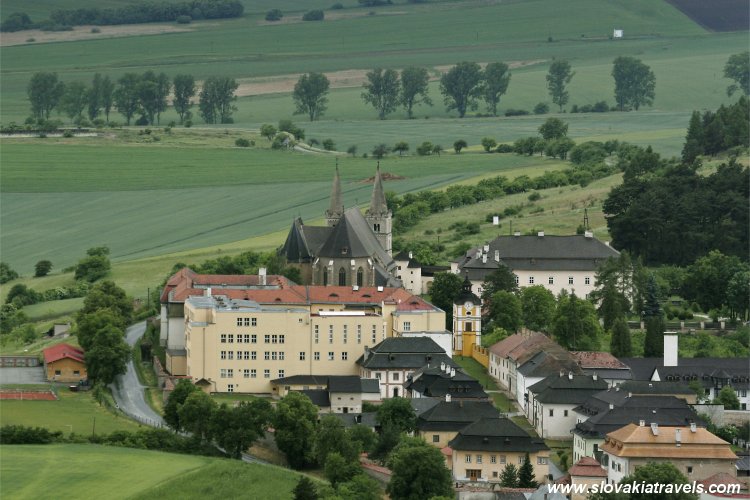 (Religious capital of the Spis region). Also the history of Spisska Kapitula is connected with the history of the Spis castle. It is situated on the eastern part of the slope of the Martin's hill ,1 km from the town of Spisske Podhradie.
(Religious capital of the Spis region). Also the history of Spisska Kapitula is connected with the history of the Spis castle. It is situated on the eastern part of the slope of the Martin's hill ,1 km from the town of Spisske Podhradie.
This small ecclesiastical seat of the 13th century is completely surrounded by stonewalls, built between 1662-1665. Today is the seat of the Bishop of Spis and the centre of Church administration.
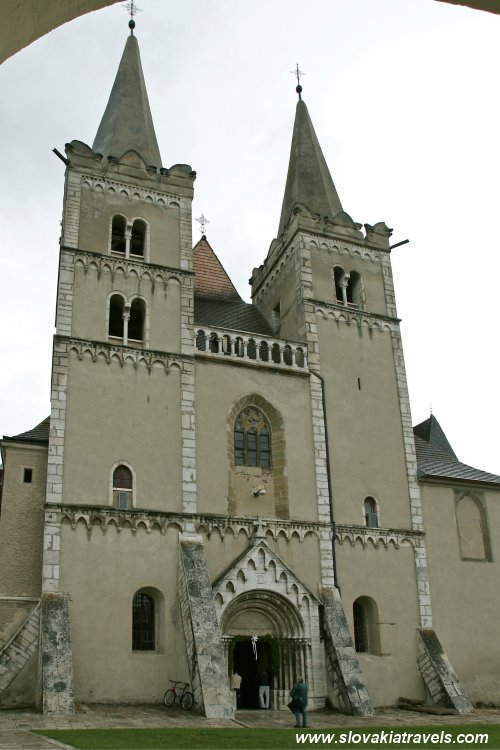 The Cathedral of St. Martin - this three naves construction in the late-Romanesque style is of the first part of the 13th century. It has two Romanesque twin towers and a gothic sanctuary. The cathedral was different times restored. Between 1488 and 1499 was connected to the church the late-gothic Zapolsky funerary chapel and in the years 1777-1778 the cathedral was restored in baroque style.
The Cathedral of St. Martin - this three naves construction in the late-Romanesque style is of the first part of the 13th century. It has two Romanesque twin towers and a gothic sanctuary. The cathedral was different times restored. Between 1488 and 1499 was connected to the church the late-gothic Zapolsky funerary chapel and in the years 1777-1778 the cathedral was restored in baroque style.
The cathedral has particularly valuable interior, especially the Gothic altars; the altar of St. Martin (1470-78), the altar of the Three king, the altar of St. Michael, the altar of the Virgin Mary Falling Asleep, the neogothic altar of the Pietà. The most precious altar is the neogothic triptych altar of the Coronation of the Virgin Mary created in 1493, it is the Zapolsky Chapel. Near the door it is located a very precious object - a white lion (Leo albus) a Romanesque stone sculpture originated of the 13th century, and is one of the little examples of the Romanesque art in Slovakia.
On opposite sides of the cathedral are situated the Seminary and the Bishop's Palace of the 15th century, in Romanesque origin and more later restored in gothic and baroque style.
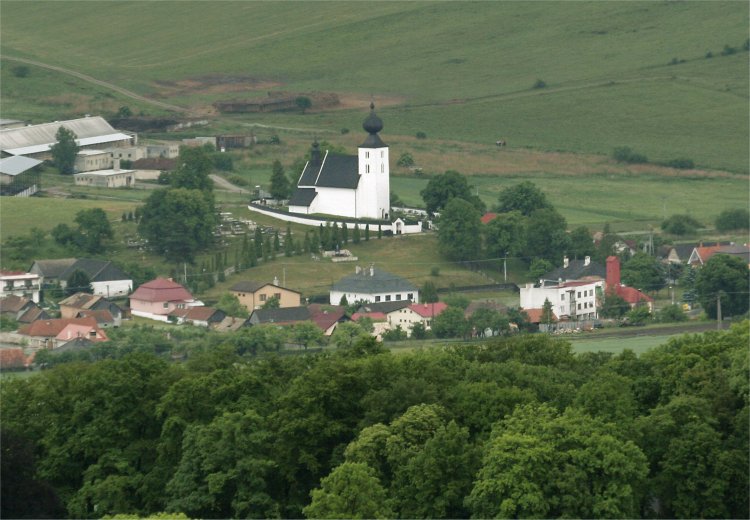 The Early-Gothic church of the Holy Spirit at Zehra is part of the heritage of the 'UNESCO. It was built between 1245 and 1275. Inside the church are very precious frescoes. The oldest frescoes are from the end of the 13th century, while the most recent one was painted in in the half of the 15th century.
The Early-Gothic church of the Holy Spirit at Zehra is part of the heritage of the 'UNESCO. It was built between 1245 and 1275. Inside the church are very precious frescoes. The oldest frescoes are from the end of the 13th century, while the most recent one was painted in in the half of the 15th century.
The most beautiful fresco is the Tree of Life (Arbor vital) and dominates on the northern wall of the nave. It was painted around 1400. The other precious objects in the church are - the stone baptismal font of the 13th century, the altar and the pulpit of the 17th century.
 The town under the Spis castle is of the 11th century, but its importance grew after the settling of Saxons in the 12th and 13th centuries. In that time the small own developed as a community below the castle, mentioned in 1249 for the first time. The town of Spisske Podhradie was an important centre of crafts. Its history is connected to the history of the Spis castle.
The town under the Spis castle is of the 11th century, but its importance grew after the settling of Saxons in the 12th and 13th centuries. In that time the small own developed as a community below the castle, mentioned in 1249 for the first time. The town of Spisske Podhradie was an important centre of crafts. Its history is connected to the history of the Spis castle.
The monuments of the city:
 The church of the Virgin Mary - the original gothic church of the 13th century, was different times restored. Its contemporary appearance in classical style is of 1829. From the original construction have preserved only the tower and the portal of entrance. Inside the church is situated a very precious gothic Virgin Mary triptych altar and the gothic baptismal font in bronze of 1390.
The church of the Virgin Mary - the original gothic church of the 13th century, was different times restored. Its contemporary appearance in classical style is of 1829. From the original construction have preserved only the tower and the portal of entrance. Inside the church is situated a very precious gothic Virgin Mary triptych altar and the gothic baptismal font in bronze of 1390.
 The civic hospital (the Monastery and Church of the Mercedarians) - it was constructed in 1327 and it came used like small civic hospital. In the 17th century the building was inherited by the religious order of "merciful brothers" who enlarged the hospital and annexed two town-houses to the monastic complex and than baroquized it.
The civic hospital (the Monastery and Church of the Mercedarians) - it was constructed in 1327 and it came used like small civic hospital. In the 17th century the building was inherited by the religious order of "merciful brothers" who enlarged the hospital and annexed two town-houses to the monastic complex and than baroquized it.
The Evangelical church - it was built between 1799 and 1808. Inside the church and in the center of the main altar it attracts the caution the picture of Christ on the Mount of Olives that is of the same period of the construction of the church.
The Jewish Synagogue - it is of 1875, after a fire was rebuilded again. The Synagogue is only sustained in the whole Spis region and is reconstructed now, and a museum/gallery will be opened in it.
The Town hall - it is of 1546 built in Renaissance style and the Marian Column - dating from 1726 in Baroque style. Both are located in the center of the Marian square.
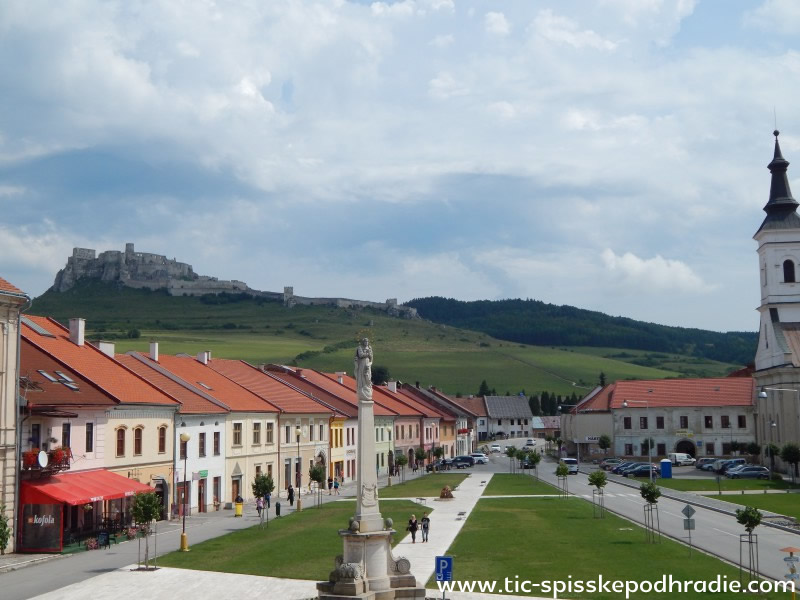
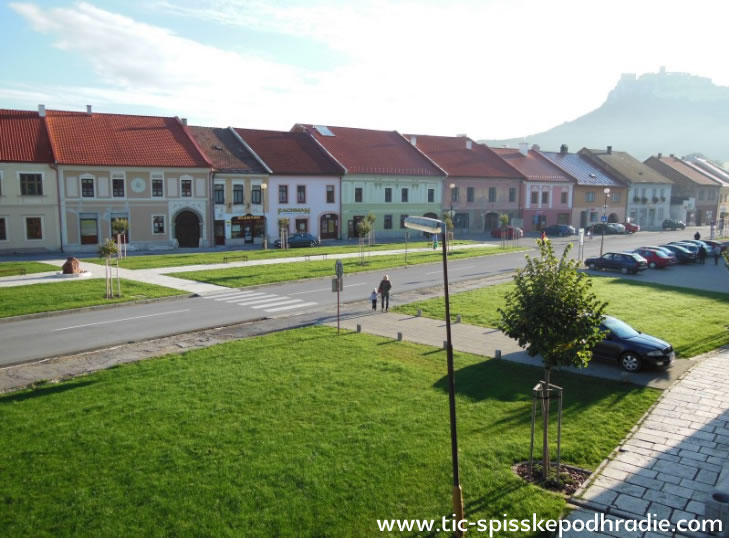
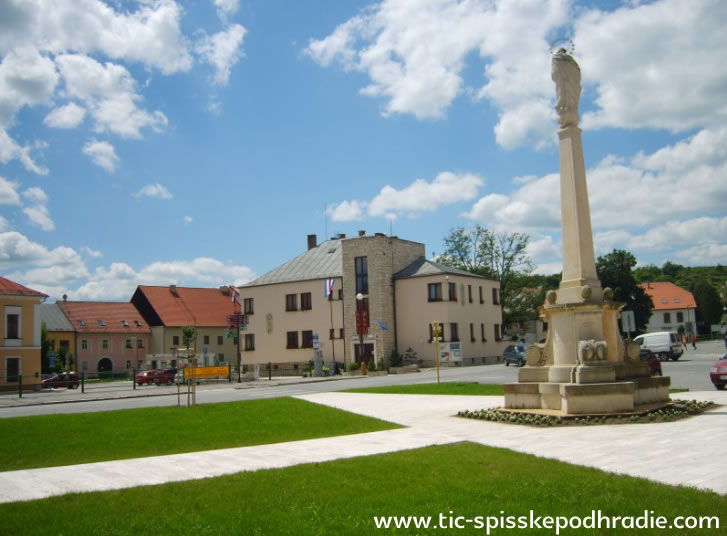
Cultural events see all
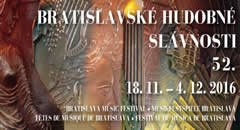
18 november - 4 december 2016
Bratislava Music Festival
The 52nd year of the Bratislava Music Festival is the most important and most prestigious international festival in Slovakia
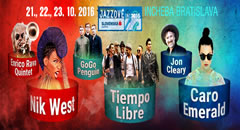
21-23 October 2016
Bratislava Jazz Days SLSP 2016
The international jazz festival BJD is one of the greatest events of this kind in central Europe. The 42end year of the Bratislava Jazz Days

Slovakia's Cibulková wins WTA Finals
Dominika Cibulková's records a life achievement after defeating German Angelique Kerber. Dominika Cibulková is the winner of the WTA Finals in Singapore. She beat her opponent, number one in the world ranking, Angelique Kerber, in two sets 6:3, 6:4. The match lasted 77 minutes.
 In the past the town was the main producer of silver of the Hungary and one of the most significant mining town in the Europe. The first news written on the extraction of the precious metals and silver dates from 1075. It privileges as cities of the mining industry go back already to 1238. The Stiavnica seal is of 1275 and it is also the oldest representation of town's fortifications which is a pre-heraldic topographic symbol, and with mining implements set into the Arms.
In the past the town was the main producer of silver of the Hungary and one of the most significant mining town in the Europe. The first news written on the extraction of the precious metals and silver dates from 1075. It privileges as cities of the mining industry go back already to 1238. The Stiavnica seal is of 1275 and it is also the oldest representation of town's fortifications which is a pre-heraldic topographic symbol, and with mining implements set into the Arms.




